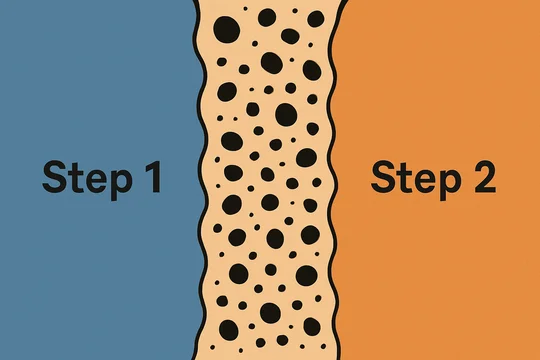
We've talk before about how accused infringers so often give short shrift to the representative claims issue in § 101 briefing, and how it deserves a lot of attention if you want to prevail on a § 101 motion to dismiss.
Judge Burke issued an R&R yesterday, following his recent § 101 day, invalidating one claim of an asserted patent—but declining to hold 27 other claims valid, citing the accused infringer's poor representative claims argument:
I will note that I [have] been reviewing Section 101 motions like these for most of my entire 11 years as a judge[;] during that time, I have resolved many, many such motions. But I cannot recall ever having seen an attempt by a defendant to assert representativeness across such a broad array of claims and broad array of patents in one set of briefing as in this effort by Defendant here.
The [D]efendant’s motion would implicate 27 other asserted claims across the seven other patents[—]patents that together include a total of 376 claims. And in its briefing, Defendant specifically addressed only a very small number of asserted claims, none with any great specificity. Although Defendant asserts that any differen[ce] between claim 1 and those various claims are “minor” and “immaterial,” . . . it[ has] given the Court almost no argument or way to meaningfully analyze whether those statements are truly correct.
Defendant attached as Exhibit A to its opening brief a chart that purported to show how certain[—]though nowhere near all[—]of those asserted claims bore some relation to claim 1. But that chart was incredibly hard to read, and it used a color-coded key that was very difficult to decipher. What was plain was that Defendant was straining to cram in argument about a huge smorgasbord of claims that could not responsibly be argued in just one motion like this.
From the opinion, at least, it sounds like the claims may have been so diverse that the defendant may had difficulty effectively arguing representativeness even if it had devoted its entire brief to it.
Worse, the Court found that the plaintiff had responded with evidence that the claims were not representative:
It is true that in Berkheimer [vs.] HP Inc., the Federal Circuit noted that [c]ourts may treat a claim like claim 1 as representative of other claims in certain situations, such as if the “patentee does not present any meaningful argument for the distinctive significance of any claim limitation[s] not found in the representative claim[.]” . . . But here, in its answering brief, Plaintiffs did present meaningful argument that one could not use claim 1 as a cudgel to eliminate 27 other asserted claims across seven other patents in the absence of any real substantive argument in support. Plaintiffs noted, for example, that some of those other claims include limitations that claim 1 does not . . . such as “real time buy-out offers” or that controllers “continuously” retrieve or evaluate data. Certain of the additional other asserted claims implicate certain combinations of hardware and software components that did [not] come up in our discussion of claim 1 today. The Court is not sure if these types of limitations would ultimately make a difference in the Section 101 analysis, but they might. And it believes it[ is] fundamentally unfair to Plaintiffs to invalidate all of these claims without having a better process before doing so.
Of course, it [is ]not like [] [P]laintiffs themselves listed out all 27 other of those asserted claims in their answering brief or provided pages of detailed argument as to why those claims were all meaningfully different than claim 1. But who could blame Plaintiffs? It would be functionally impossible to do that in a 20-page brief, and the Court cannot see how Plaintiffs were required to do so here.
This is one of the biggest recurring missed opportunities in § 101 motions on both sides. It seems like defendants often fail to really hit this issue in their opening briefs, and plaintiffs often fail to capitalize on that in their answering briefs.
Here, it looks like the plaintiff did a good job highlighting the issue for the Court, while the defendant tried to address it but couldn't clear the bar. From the sound of the opinion, the defendant may be lucky that they didn't lose their motion entirely due to the number and diversity of the remaining claims.
Where to now?
The Court recognized that this issue will come back in the case:
The Court recommends that the motion be denied . . . , without prejudice to renew at a later stage of the case . . . .
In the end, if the District Court adopts the Court’s decision as to the '439 patent, the Court has little doubt that this will provide some guidance to [the] parties as to whether other asserted claims of the other asserted patents really are meaningfully different than the '43[9] patent’s asserted claims. That may in turn help the parties figure out whether those other claims are thus likely to survive any future permitted Section 101 challenge, and in turn, the Court’s decision today might help streamline the case[.] [B]ut that will have to be enough for now.
The next logical place for the defendant to renew its motion would be at the summary judgment stage, after expensive discovery and expert discovery. Then, at least, the defendant will have the option of framing the renewed motion as an issue of whether the invalidated claim is representative of the remaining 27 claims rather than starting from scratch.
But given the apparent diversity of the remaining claims here, it may still have an issue accomplishing that in the limited space it will likely have for briefing.
If you enjoyed this post, consider subscribing to receive free e-mail updates about new posts.



